
























































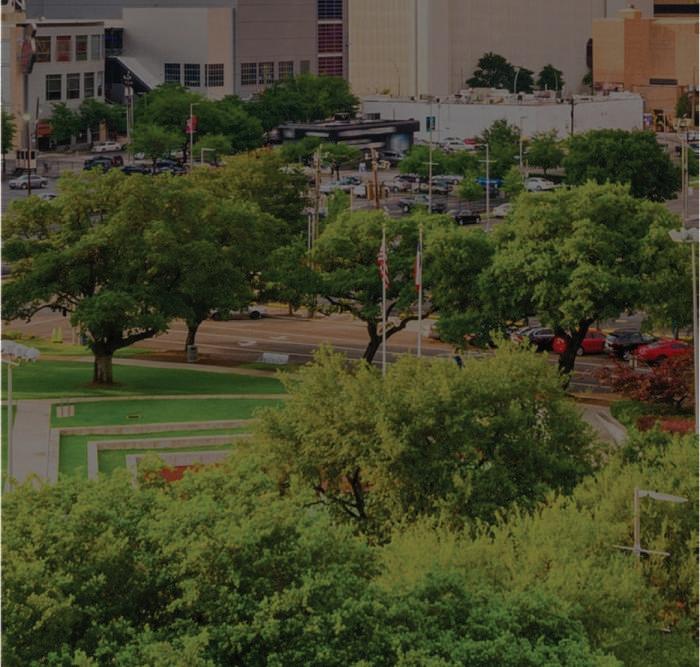




Are HISD’s campuses being utilized proportionately?
As an education reporter, I closely followed Houston ISD’s two bond propositions, one which asked for $3.96 billion for infrastructure and the other for $440 million to update technology, prior to the Nov. 5 election last year. Following the failure of the bond, which totaled $4.4 billion to reconstruct around 10% of HISD’s campuses, the school district is now dealing with scrutiny over how it uses its campuses.

A new study by Rice University’s Baker Institute analyzed HISD’s 2024-25 enrollment data, which reveals disparities in campus utilization, with some campuses being underutilized.
While HISD’s current enrollment stands at 176,731, the building capacity for HISD campuses is 212,493, resulting in a district-wide campus utilization rate of 77%. Additionally, 16,150 seats are available in temporary buildings spread over 89 campuses. The total utilization rate, including temporary buildings, is 72%.
Of the 255 campuses that the study analyzed, 81 had an enrollment of more than 50% but were operating at under 75% of their permanent building capacity, while 51 operated below 50% enrollment.
The study also cited research that found a correlation between schools with low enrollment and chronic low performance. The numbers dive into current utilization trends, national comparisons and the hard choices HISD may face in the coming years.
In the upcoming HISD board meeting, the members will be discussing “turnaround plans” for some schools. It will be interesting to see how the discussion goes and if the possibility of school closures looms over these campuses.
Books taken off the shelf at the Naval Academy Library
Books and libraries are as relevant as ever.
The U.S. Naval Academy is currently under scrutiny for removing more than 300 books off its shelves. The institution’s Nimitz Library is now reportedly missing works exploring race, gender and national identity.
“I Know Why the Caged Bird Sings,” Maya Angelou’s 1970
memoir on her struggles with racism, can no longer be found at the library, but two copies of Adolf Hitler’s “Mein Kampf” are still there, reported the New York Times. Other books like “The Bell Curve,” which says Black people are genetically less intelligent than white people, are there, but a critique of the book is gone.
Academics have spoken out against this action, raising concerns about the impact of this move on higher education and the larger discussion on the First Amendment. I’m concerned that history is repeating itself from the days of the destruction of books.
Social media is crazy sometimes. Retaliating against President Donald Trump’s tariffs, some China residents decided to jump on the opportunity by sharing videos on multiple platforms to promote the direct sales of luxury goods from Chinese manufacturers to consumers at significantly lower prices. These products include handbags, clothes and cosmetics. In one video that has almost 10 million views, a creator claimed to sell yoga pants from the same manufacturer as Lululemon at $5-$6. Another clip showed a man on a factory floor claiming to source Louis Vuitton handbags directly from Chinese manufacturers, offering them at prices as low as $50. In contrast, another showed Birkin bags at $100. Basically, they’re saying that designers all over the world buy from them, slap a label on it, then sell to us at astronomical markups. Now, I don’t know if they’re telling the truth or just trying to play in our faces. But the people are buying it—literally. Millions are clicking, commenting, and carting these deals with the speed of a Beyoncé ticket drop. Is it a scam? A global supply chain truth bomb? Or just a really well-dressed hustle? Either way, in this economy? Folks are listening. And shopping.
On the Web
• Let’s address the unpaid invisible labor of Black women.
• The Black Press is needed now more than ever.
• Lamar High School boys sweep 100-meter dash at HISD district meet.
By ReShonda Tate
A new University of Houston poll shows most Houstonians are generally satisfied with Mayor John Whitmire’s leadership— but when it comes to day-to-day city issues like crime, traffic and the state of local streets, residents are far from thrilled.
According to the survey conducted by UH’s Hobby School of Public Affairs, 59% of registered Houston voters approve of Whitmire’s performance at City Hall. However, the results show a clear undercurrent of dissatisfaction about the direction the city is heading in.
Despite 58% of residents saying Houston’s quality of life is “good,” nearly the same percentage feel the city is on the wrong track—pointing to rising housing costs, worsening traffic, and crumbling roadways.
“The city has its work cut out for it,” said Renée Cross, senior executive director of the Hobby School.
Streets, in particular, emerged as a major sticking point. Nearly half of those surveyed named poor road conditions as one of Houston’s top three challenges. And for many, it’s more than just potholes: 60% of Black voters said street conditions had a negative impact in their neighborhoods, compared to 55% of Latino residents and
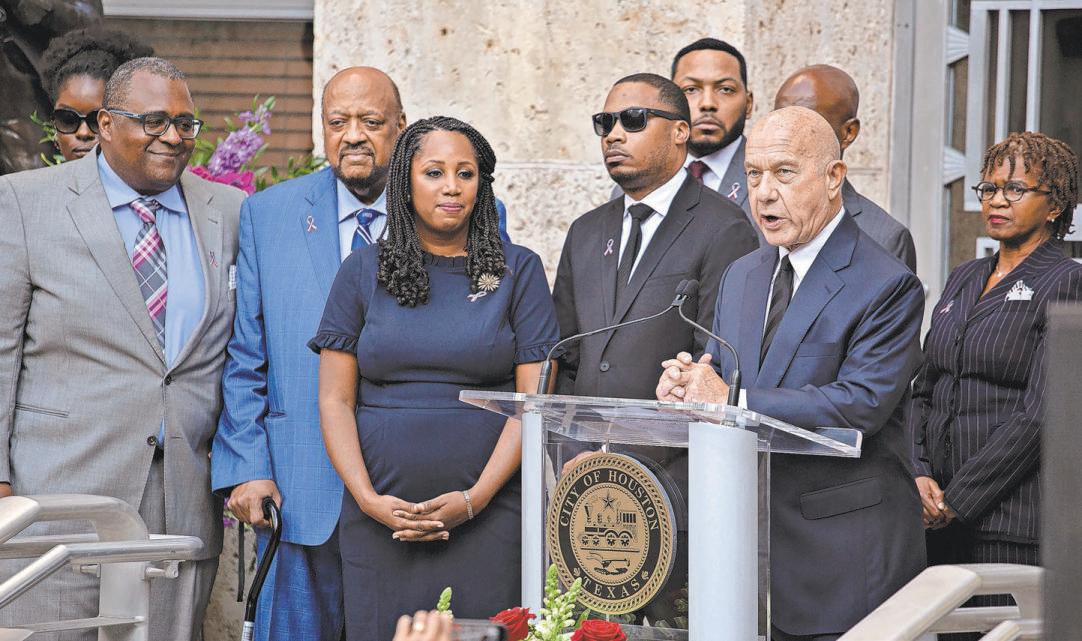
Whitmire, a longtime Democratic lawmaker elected mayor in 2023, enjoys strong bipartisan support. The approved rates:
performance
key findings:
The survey results come at a tense time for transportation infrastructure in Houston. Whitmire has faced backlash for recent decisions to remove protected bike lanes from Heights Boulevard and Austin Street. Critics say the move compromises cyclist
safety, while supporters argue it prioritizes traffic flow and public safety.
Jones said that although the cycling community is vocal and influential, their views may not reflect the priorities of most Houstonians.
“The majority of people in this city care more about getting to work on time and public safety,” he said. “They’re not as focused on recreational bike lanes.”
Still, advocates note that many who rely on bikes or motorcycles for commuting are low-income workers. A 2015 Rice University Kinder Institute report found that 42% of Houstonians who bike, ride motorcycles, or take taxis to work earn less than $25,000 a year.
Even with moderate satisfaction at the city level, Houstonians remain skeptical about the country’s direction overall. Only 26% said they believe the United States is headed the right way, while a significant 74% said it’s not.
By ReShonda Tate
A new report from Texas Southern University’s Barbara Jordan Public Policy Research and Survey Center reveals that the vast majority of Harris County voters were pleased with their experience during the November 2024 election — with support crossing party lines.
Here are some key findings from the report:
Voting experience
65% - excellent
30% - good
5% - fair
0% - poor
Election operations
62% - very well run
32% - somewhat well run
6% - poorly run
In the past, Harris County’s election process was at times problematic. Not anymore.
“Under the current leadership of
Harris County Clerk Teneshia Hudspeth, elections in Harris County have been very well run in the eyes of voters,” said Dr. Michael O. Adams, founding director of the center. “A substantial majority of Democrats and Republicans reported an excellent voting experience last fall.”
Why some didn’t
Despite having the most registered voters and number of votes cast in Texas during the vote in the November 2024 general election, only 1,567,610 of the 2,664,202 million Harris County registered voters (58.8%) turned out to vote.
Among registered voters who did not cast a ballot:
45% didn’t like any of the candidates
42% felt their vote didn’t matter
33% were worried their vote wouldn’t be counted
5% lacked an acceptable photo ID — and cited it as the main reason they didn’t vote
Non-voter profile:
91% had a Texas driver’s license
40% had a U.S. passport
Voter engagement & campaign activity
88% of voters and 66% of non-voters received election-related communication (mainly text messages)
Attended campaign and election events
10% virtual 8% in-person
Celebrity influence? Not much
The October 2024 Houston rally featuring Vice President Kamala Harris and Beyoncé had minimal influence:
91% of voters and 82% of non-voters said the rally had no effect on their decision to vote.


By Tannistha Sinha
It has been more than three months since state Rep. Charlene Ward Johnson (D-Houston) stepped into the Texas House of Representatives, serving District 139 which spans southwest of Spring through Acres Homes to Independence Heights.
She represents a historically liberal stronghold that has long been led by Black Democrats, including the late Houston Mayor Sylvester Turner who represented it for 27 years. Te Houston native secured 51.9% of the vote. She replaced her ex-husband, Rep. Jarvis Johnson (D-Houston), who lef the position to seek a state Senate seat.
Community service has been a priority. As vice president of Greater Houston Frontiers Club and a member of Alpha Kappa Alpha Sorority, Johnson now serves on the House Committees on Higher Education and Culture, Recreation & Tourism.
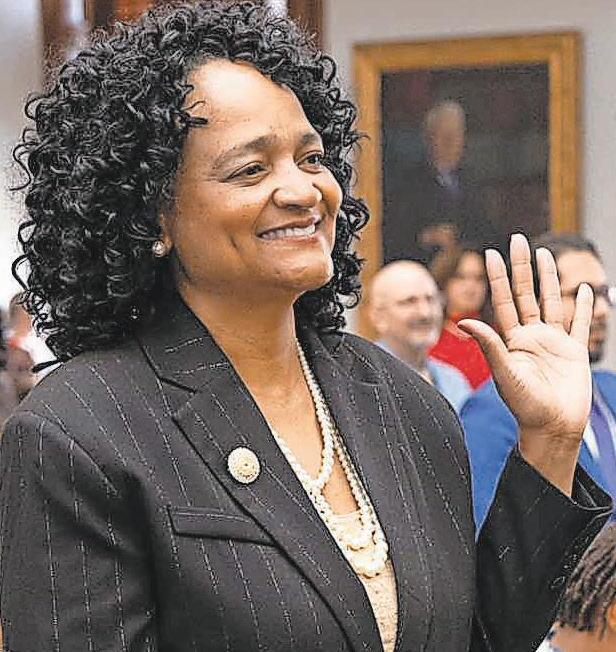
With 25 years of experience in the energy sector and customer service, she holds a bachelor’s degree in Technology from the University of Houston and a master’s in Organizational Management from the University of
Championing higher education
Johnson’s district includes Houston Community College, Lone Star College, University of Houston and HBCUs Texas Southern University and Prairie View A&M University. Her passion for higher education runs deep, having served as the president of the University of Houston Black Alumni Association and on the Houston Community College Board of Trustees.
“Education is a very important part of people being able to have better jobs and better opportunities,” she said. “Tat’s what I’ve been focusing on, libraries and scholarships, making education afordable and accessible.”
One of Johnson’s key legislative battles has been opposing school vouchers, which she believes will divert public funds from under-resourced public schools.
Tere are two ongoing discussions on school choices at the legislature. SB 2 allocates 80% of the funding to disabled or low-income students, 20% to any other student, and a fat $10,000 voucher for students who qualify. Meanwhile, HB 3 prioritizes students with disabilities and seeks to establish an “education savings account” program (vouchers) to use public funds to help pay for private schools.
Johnson plans to vote against HB 3, arguing Houston public schools have more pressing priorities like teacher pay, building repairs and security.
“The fight continues for the school voucher regulation,” she said. “I believe public dollars need to stay in public schools…Tere are several schools in my district that are closing, and that’s a concern.”
She also filed HB 3549, requiring school districts and open-enrollment charter schools to report data on disciplinary and law
enforcement actions, including incidents and demographic information.
Johnson’s commitment to the community extends to senior citizens, many of whom are facing increased fnancial strain. She introduced bills (HB 3340, HB 3337 and HB 3691) that address some of their most pressing issues, including rent control for senior housing, improved elevator safety regulations and an online method to receive mail-in ballots.
“Infation is impacting everyone, but it’s hitting our seniors the hardest,” she said. “Their money isn’t going up…I want to make sure that they have a voice ‘cause I heard them loud and clear.”
One of Johnson’s most impactful legislative eforts addresses maternal mortality and morbidity among Black women in Texas. Motivated by the alarming rate of maternal deaths among Black mothers, her bill (HB 3339) calls for a comprehensive study to investigate the causes and propose solutions.
“Black mothers are dying at a higher rate than any other race or any other gender,” she said. “That is a concern that we need to have more awareness and funding for that.”
By Laura Onyeneho
Texas universities face mounting pressure from the federal government as the Trump administration intensifies its crackdown on diversity, equity and inclusion (DEI) policies.
The U.S. Department of Education has warned that institutions risk losing critical funding if their programs violate anti-discrimination laws, forcing universities to re-evaluate how they implement DEI initiatives.
The U.S. Department of Education announced investigations into multiple universities for alleged race-based discrimination, citing concerns over admissions, scholarships and student programs. On Feb. 14, Craig Trainor, the department’s acting assistant secretary for civil rights, stated in a “Dear Colleague” letter (and subsequently a Frequently Asked Questions document) to school administrators that race-based policies violate the Supreme Court’s 2023 ruling on affirmative action. This directive is being broadly interpreted to apply beyond admissions—potentially impacting graduation ceremonies, housing policies and student organizations.
The Trump administration’s stance signals a broader effort to dismantle DEI initiatives in higher education. Universities that fail to comply with federal directives could lose Title IV
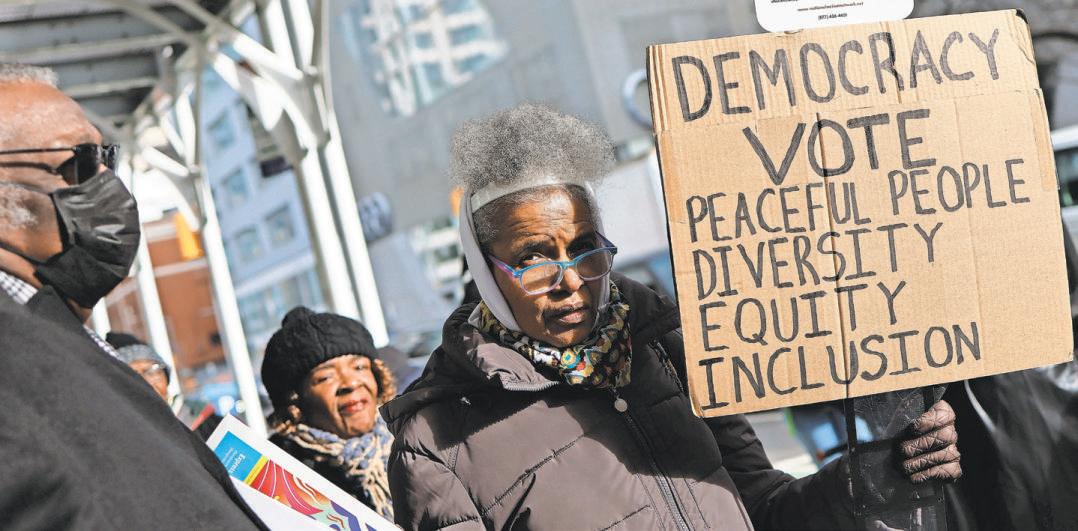
student aid, curriculum development funding and other financial support. Legal challenges against Trump’s executive orders have already emerged, with civil rights organizations arguing that these actions exceed executive authority and threaten academic freedom.
Civil rights groups, including the Legal Defense Fund (LDF), argue that the Trump administration is misapplying the Supreme Court’s ruling to push an agenda of “colorblindness” that erases programs meant to support historically marginalized students.
“They’re taking a narrow Supreme Court decision and trying to say race can’t be used in any aspect of student life,” Ingram said.
“Many civil rights organizations have spoken out against this because it’s a radical and inaccurate interpretation of federal civil rights law.”
A coalition of more than 60 civil rights organizations recently sent a letter to the Department of Education demanding that the guidance be rescinded, arguing that it threatens equal education opportunities.
Many of these institutions, particularly historically Black colleges and universities (HBCUs), rely on federal funding to operate programs that promote inclusion and support students of color.
Ingram warns that HBCUs like Texas Southern University and Prairie View A&M face a significant threat of losing funding due to Texas Senate Bill 17, which prohibits DEI programming in public universities and federal guidance that weaponizes Black institution history.
“Segregation was about the state forcing separation based on racial animus. HBCUs were founded because Black students were excluded from higher education. These institutions have always been inclusive,” Ingram said. “In many ways, these federal guidelines weren’t written with HBCUs in mind, but because the law applies to everyone, these schools are caught in a legal quagmire. If they fully comply, it could create existential-like deterioration of the missions for these institutions.”
Read how Texas Universities are responding





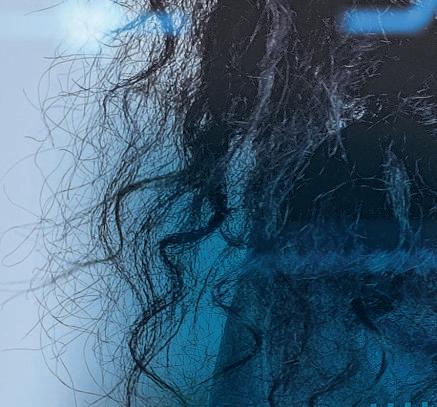

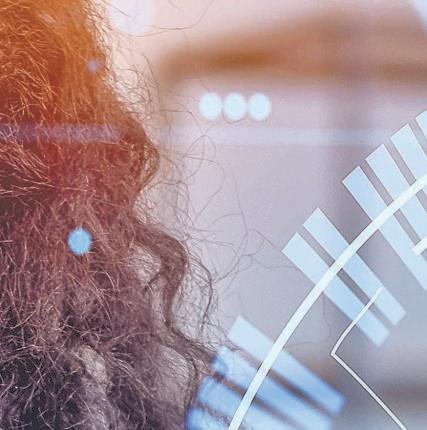





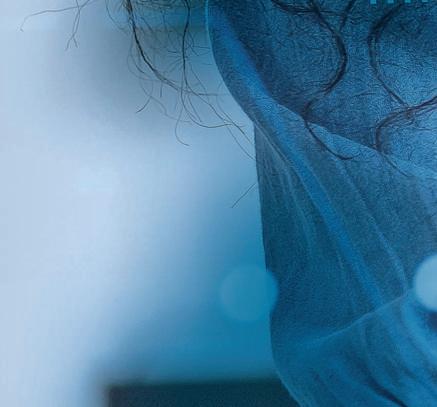





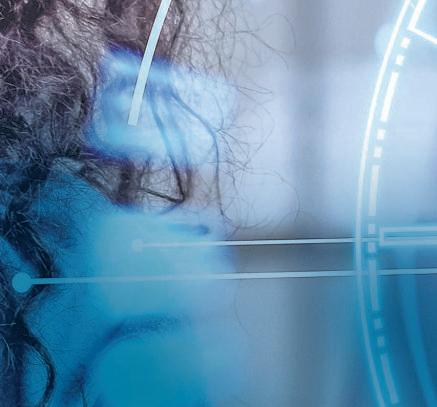


Artificial Intelligence was once heralded as the great equalizer—promising efficiency, objectivity and progress. But for many African Americans, the growing influence of AI has exposed a much darker reality: algorithms that perpetuate the very racism they were supposed to eliminate.
By ReShonda Tate
From facial recognition misfires to discriminatory hiring systems and over-policing through predictive technology, many in the Black community are bearing the brunt of AI’s biases. And experts say it’s not accidental— it’s built into the system.
Understanding the root of AI bias
“AI systems learn from data—and that data reflects our society’s biases,” says Dr. Joy Buolamwini, founder of the Algorithmic
Justice League. “If you train an algorithm on a flawed history, it will replicate those injustices.”
AI models are developed using massive datasets, often pulled from historical records, social media and even government databases. But when those sources contain racial disparities—such as disproportionate policing or underrepresentation in highwage jobs—the AI absorbs and amplifies those inequities.
“These systems are tested in sanitized labs, not real-world environments where racial

How racial bias hurts us most



complexity exists. And when they fail, Black people pay the price,” Buolamwini said.
Facial recognition: A modern-day mugshot lineup
Facial recognition technology is under increasing scrutiny for its alarming inaccuracy in identifying Black individuals— errors that have already led to wrongful arrests and widespread concern.
Robert Williams knows firsthand the devastating impact of faulty facial recognition.
“A computer said I stole something I had nothing to do with. It turned my life upside down,” said Williams, whose Detroit case has been taken up by the ACLU. “I never thought I’d have to explain to my daughters why daddy got arrested. How does one explain to two little girls that a computer got it wrong, but the police listened to it anyway?”
A study by the MIT Media Lab revealed that commercial facial recognition systems misidentified darker-skinned individuals, particularly Black women, at rates far higher than white men. One system misclassified dark-skinned women 34% of the time, compared to just 0.8% for light-skinned men.



Last year, civil rights advocates in Houston raised concerns after the City Council approved a $178,000 contract with Airship AI Holdings, Inc. The deal added a 64-camera network with facial recognition capabilities to the Houston Police Department’s surveillance tools.
Texas Southern University professor Carroll Robinson, a former Houston City Council member, warned of the risks.
“Some innocent person, misidentified, not by a human, but by a camera, ends up in the criminal justice system, incarcerated at the county jail,” Robinson said.
Robinson has called for state legislation to ensure artificial intelligence systems do not perpetuate racial discrimination.
The technology’s failings extend beyond policing. Amazon’s face-ID system, Rekognition, notoriously misidentified Oprah Winfrey as male and falsely matched 28 members of Congress with criminal mugshots in a test by the ACLU.
A more recent study by the U.S. Commerce Department echoed these concerns. It found that facial recognition systems were far more likely to falsely match two different Black faces than white faces—error rates for African men and women were exponentially




higher than for Eastern Europeans, who had the lowest error rates.
These disparities stem from how AI systems are trained.
“Algorithms are only as good as the data we feed them,” says Buolamwini. “When those datasets are dominated by white male faces, the systems struggle to identify anyone who doesn’t fit that mold.”
Buolamwini learned this firsthand as a student. While working on a project using computer vision, she discovered that the robot couldn’t detect her face—until she put on a white mask.
The push for AI accountability Activists and civil rights groups are pushing back. Buolamwini’s Algorithmic Justice League is calling for legislation that enforces transparency in AI systems, mandates thirdparty audits and prohibits the use of certain technologies—like facial recognition—in policing altogether.
There are signs of progress as some local governments are also banning facial recognition tech, and some companies are beginning to reevaluate their tools.
While much of the conversation centers on the harm AI causes, Black technologists


are also reimagining what equitable AI could look like.
Organizations like Black in AI, Data for Black Lives and the Algorithmic Justice League are creating spaces where Black developers, ethicists and data scientists are taking the lead.
“Our taxpayer dollars should not go toward surveillance technologies that can be abused to harm us, track us wherever we go, and turn us into suspects simply because we got a state ID,” the ACLU said in a statement.
What you can do
Know Your Rights: If you’ve been wrongfully targeted by an AI-driven system, contact civil rights organizations like the ACLU or NAACP Legal Defense Fund.
Get Informed: Resources like the Algorithmic Justice League and Black in AI offer education on AI fairness and advocacy.
Advocate: Support policies that call for transparency, fairness and accountability in AI development. Contact your representatives about AI regulations.
Diversify Tech: Encourage schools and companies to invest in programs that train and recruit Black professionals into AI and data science.
How its stealing writers’ voices
By ReShonda Tate
When ChatGPT exploded onto the scene in late 2022, it promised a new frontier in creativity and productivity. But for many writers— especially Black creatives—the AI revolution has presented a number of challenges: their words, ideas and voices are being co-opted, misattributed, and in some cases, weaponized against them.
From lawsuits against tech giants to wrongful accusations that upend careers, a troubling picture is emerging—one where artificial intelligence isn’t just changing the writing world, but actively harming those who’ve long been pushed to the margins of it.
AI’s appetite for copyrighted work
Major AI companies like Meta, OpenAI, and others have trained their language models using massive datasets scraped from the internet— books, essays, blogs, and articles often included without permission or compensation. Now, a growing number of writers are fighting back.
Meta is currently facing a class-action lawsuit filed by authors accusing the company of using copyrighted material without consent to train its models. The complaint underscores how AI systems are built on the backs of creative professionals—often without regard for ownership, credit, or compensation.
“This isn’t innovation. It’s exploitation,” said one plaintiff. “Our intellectual property is not just data—it’s our livelihood.”
Accused by the machines
Beyond copyright violations, there’s another, quieter crisis unfolding: writers being falsely accused of using AI when they haven’t.
Rose Jackson-Beavers, a seasoned author, was stunned to find her work flagged as AI-generated.
“I was accused of using AI, and when I clicked on the link, it was my own website,” she said. “It was my bio. I put two chapters on Grammarly and was angry that it said my text matched a website. It said I had patterns that resemble AI.”
Morgan McDonald, a writer in the nonprofit world, shared a similar experience.
“I just quit my job at a reproductive justice org, partially because my manager consistently accused me of using AI for applications. She said Grammarly was flagging my work as AI-generated and that it was a security concern. But I wasn’t using it.”
These accusations, often based on AI
detection tools with dubious accuracy, are causing real harm. Freelance writers are losing gigs. Students are being denied diplomas. Professionals are being censured, silenced or shamed—all for writing in their voice.
The problem with AI detectors
After ChatGPT’s launch, dozens of startups rushed to fill the void with detection tools— like GPTZero, Copyleaks, Originality. AI and Winston AI—that claim to spot machine-written text with near-perfect accuracy. However experts say those claims are misleading at best and dangerous at worst.
“There is no magic software that can detect AI-generated text with certainty,” said Debora Weber-Wulff, a computer science professor who co-authored a study on AI detection reliability. Studies have shown that AI detectors flag work from marginalized writers—particularly Black and non-native English speakers—at disproportionately high rates. A 2023 report from Common Sense Media found that Black students were more than twice as likely to be falsely accused of using AI than their white or Latino peers. It’s an issue that may stem, at least in part, from flaws in AI detection software. AI detection systems have already shown troubling signs of bias. According to experts, the disparities uncovered in Common Sense Media’s report may be due to the AI tools themselves or to biases held by educators.
“We know that AI is putting out incredibly biased content,” said Amanda Lenhart, head of research at Common Sense. “Humans come in with biases and preconceived notions about students in their classroom. AI is just another place in which unfairness is being laid upon students of color.”
In other words, while AI tools aren’t human, they still mirror the prejudices—conscious or not—of the people who create and use them.
“AI is not going to walk us out of our pre-existing biases,” Lenhart said.
Legal and ethical battles ahead Groups like the Authors Guild are fighting to hold AI companies accountable and push for transparency in model training. Some legislators are now proposing laws that require clear consent and compensation when creative work is used to train AI.
There are also calls for independent audits of AI detection tools and clearer standards on when and how they can be used—especially in education and employment settings.
“AI isn’t going away. It will continue to reshape journalism, literature, and freelance creative work. But writers—especially those from marginalized communities—deserve protection, respect, and agency,” Beavers said.
By Aswad Walker
Black preachers have a long and storied history of contextualizing scriptures and holidays to make them “real” and relevant to the realities of the present moment.
Easter and the resurrection, at its core, is no different.
So, how are Houston-area Black pastors approaching their Easter 2025 messages in light of the political turmoil and seemingly non-stop attacks on Black humanity?
First, let’s examine how past turbulent times led Black people to interpret the Easter resurrection story
Wheaton College New Testament professor and author Dr. Esau McCaulley argues that for enslaved Black people, the Easter resurrection story represented more than just the traditional interpretation of Jesus’s “victory” over death.
McCaulley says during U.S. slavery, enslaved Black people saw the resurrection as a rebuke of state power (i.e., the power of “massa” and all institutions that enforced slavery).
Black people’s pride in themselves and desire for self-determination as expressed by their participation in the Civil Rights/Black Power movements. That year (1967), Cleage interpreted the Easter resurrection as “the resurrection of the Black Nation.”
So, how are Houston-area Black preachers connecting the angst many Black people are feeling due to the erosion of civil rights via White House actions with Easter and the resurrection story at its core?
Like Black religious leaders of old, Dr. Timothy W. Sloan, senior pastor of The Luke Church (2380 S Houston Ave, Humble, TX 77396), has considered the “signs of the times” in fashioning his church’s series of sermons leading up to and including Easter Sunday.
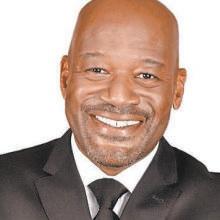

Dr. Timothy Sloan
“The fact that Jesus was the one being beaten and killed at the hands of the state though he was innocent functions as a critique of the [overwhelming] power of the state,” said McCaulley.
So, for the enslaved, McCaulley asserts Easter Resurrection “represented the defeat of the state,” or what many today would label “white supremacy.”
On Easter Sunday 1967, during the turbulent days of the Civil Rights/Black Power movements, Reverend Albert B. Cleage Jr. unveiled at his Detroit church an 18-foot-tall mural that was considered controversial at the time. The mural depicted Mary as the Black Madonna holding her baby, Jesus, the Black Messiah.
For Cleage, the mural symbolized the rebirth (resurrection) of
The series, titled “Keep Your Head Up: Mental Wellness,” plans to explore mental health through the emotions and resilience of Jesus on his way to the cross.
“When we started looking at some of the changes that are happening socially and culturally and what we’re dealing with, we realized that one of the biggest issues was anxiety and mental wellness,” said Sloan. “We started thinking about how do we address mental health as we walk toward resurrection.”
Sloan is crystal clear on what he wants congregants to get out of his Lenten/Easter season messages.
“We want them to know that you can deal with anxiety, acknowledge and deal with it. That you can face betrayal and rejection that everyone struggles with,” he said. “You can deal with your trauma and past wounds, and you can find victory in overcoming all of it as we become focused on Christ and the cross and the victory it affords us.
By Aswad Walker
AAIf there is a common thread connecting all Houston-area Black celebrities, politicians, activists and organizational leaders, it’s photographer extraordinaire Vicky Pink.
She’s captured in pictures and videos almost every Black happening imaginable – mayoral inaugurations, congressional meetings, organizational black-tie affairs, church bazaars and so much more.
That’s why it came as no surprise to anyone that Pink, at some point, put together a show of her immense portfolio of work cataloging Houston’s happenings over the past two decades.
That showing recently came. Well, kind of.
Pink provided a sneak peek while teasing a larger, more extensive showing coming soon. That preview came in the form of a gathering called “Through Vicky’s Lense –Making the Cut: A Photographic Journey.”
The event coincided with the celebration of Pink’s 60th birthday.
The showcase was described as “an inaugural presentation representing 20 years of excellence in photojournalism.” The exhibit also provided a glimpse of individuals Pink has covered extensively, including the late U.S. Representatives Sheila Jackson Lee and Sylvester Turner.
For Pink, the event was about displaying

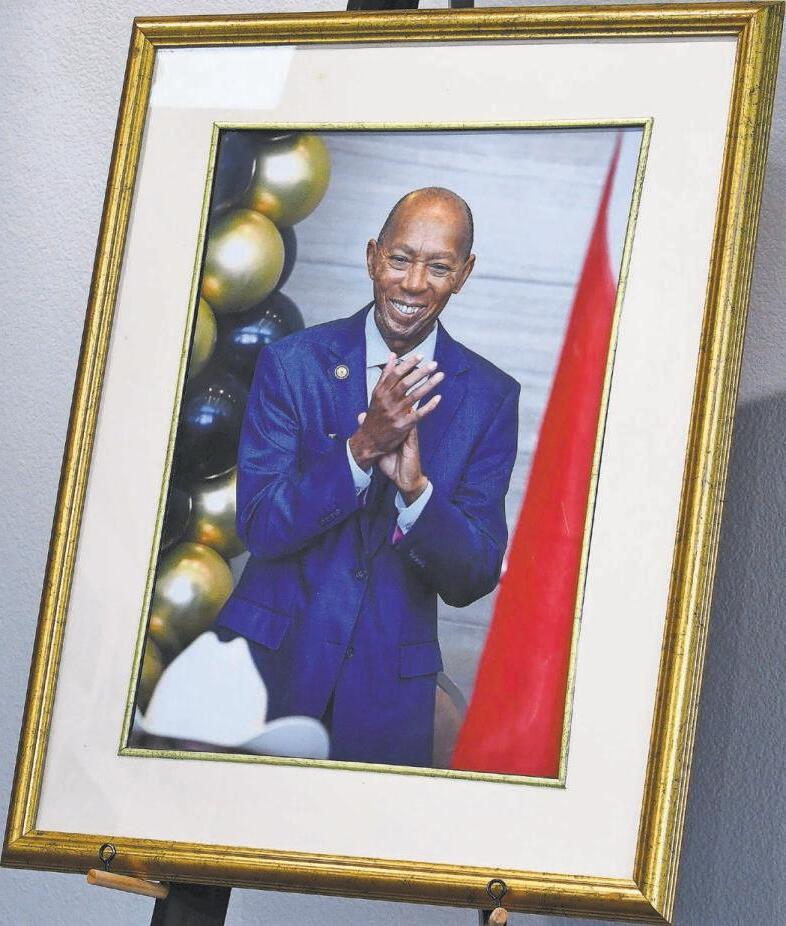

some of her award-winning photos and celebrating the relationships she’s built through her craft.
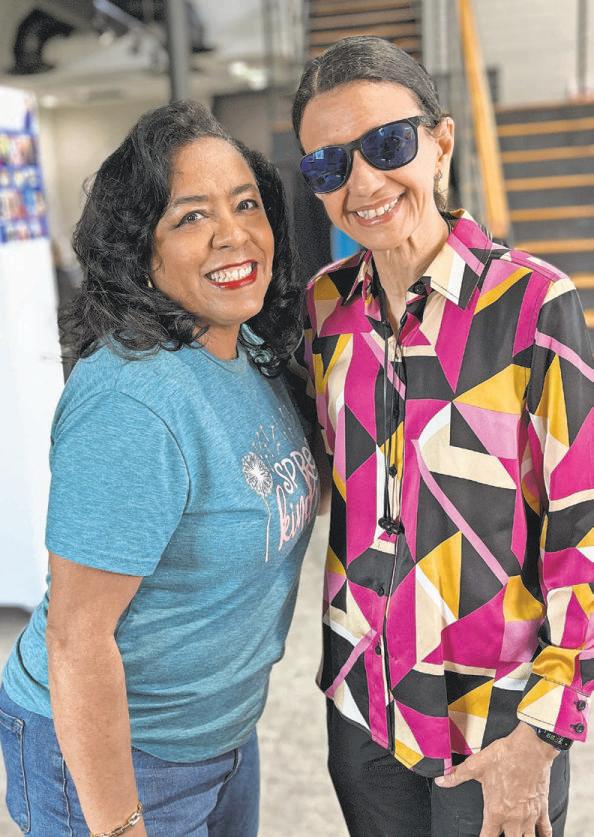
Photographer extraordinaire and Houston native Vicky Pink, seen here to the right of her best friend Dr. Ellene Polidore, has traveled the country and world taking awardwinning shots while covering politicians, celebrities and grassroots Houstonians. Credit: Aswad Walker.
“Being a photographer, you not only are photographing events, but a lot of times they’ll use you over and over,” said Pink, who worked as an engineer and educator before making photography her full-time gig. “So, over the period of years, you get to know that family. You get to know their kids. You get to see them when they’re little and then when they grow up.”
Held at the Kay Davis Showroom (4237 Davenport, Houston, 77051), an intimate gathering of Pink’s family, friends, and business associates was treated to a showing of Pink’s work, which included photo displays, videography work and scores of copies of International Focus Magazine (IF), an entity she co-founded.
Attendees included family and friends, like her 90-year-old father Henry Heileman, granddaughter Hazel Marie Sims, son Amir Pink, mentors, photography buffs and Dr. Ellene Polidore, one of Pink’s best friends from their Kashmere High School days. Her granddaughter happens to be an up-and-coming photographer.
“Back in the day now, we graduated in 80-something, back when the band was live and the football team was good,” recalled Polidore, mother of Taylor Polidore Williams (star of Tyler Perry’s Netflix series “Beauty in Black”). “We had wonderful teachers that taught us how not only to take
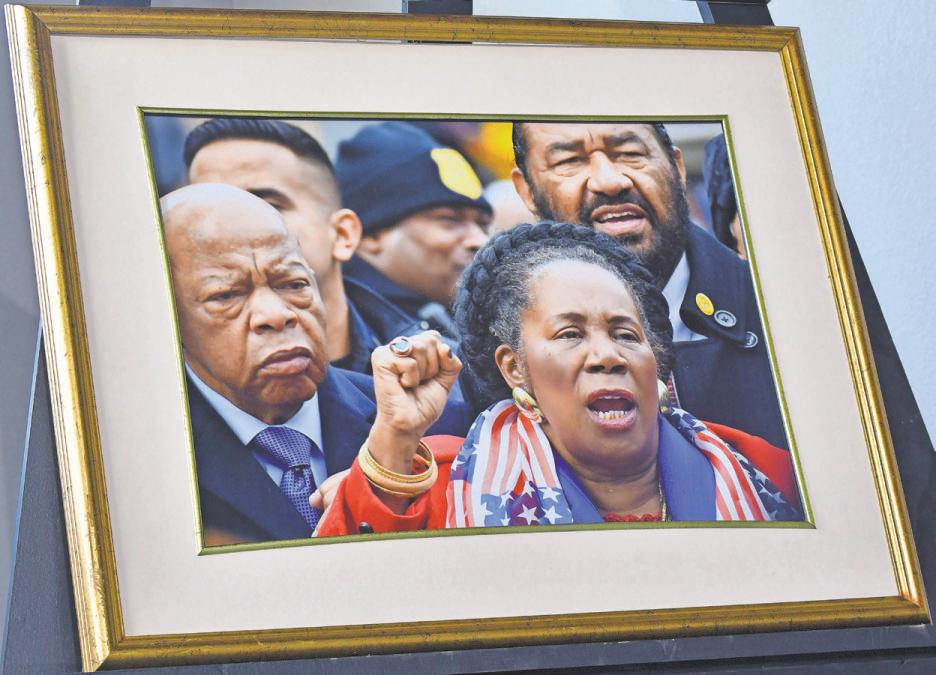
pictures but to develop pictures.”
Polidore said she and Vicky learned from the best.
“[Vicky] is my go-to person for photography because she knows how to capture what you want in the moment and I just love her for that,” shared Polidore.
Pink traces her passion for photography to her mother (Marie Heileman), who loved keeping photo albums and Pink, who describes her as “always taking our pictures.”
Pink credits her photography mentors (Ben DeSoto, Grady Carter, Earlie Hudnall and Melvin Dixon) for helping her hone her skills to the level of a trusted professional.
It’s no stretch to say Pink’s work has appeared in nearly every Black-owned media publication in the Greater Houston area, including the Defender.
She remains a trusted and go-to photographer for many of Houston’s movers and shakers. So much so that Pink was requested to accompany several Houston-area politicians (including Jackson Lee) on multiple trips to Washington, D.C., to cover the Congressional Black Caucus. Pink has even covered assignments overseas, including Cuba and Canada. Additionally, Pink traveled to the Bahamas to shoot the Myles Munroe funeral.
Along with IF, Pink owns and operates her own business, VP Productions, which offers video, photography, portraits and more, including event and conference coverage.
Being a photographer, you not only are photographing events, but a lot of times they’ll use you over and over. So, over the period of years, you get to know that family. You get to know their kids. You get to see them when they’re little and then when they grow up.”
VICKY PINK
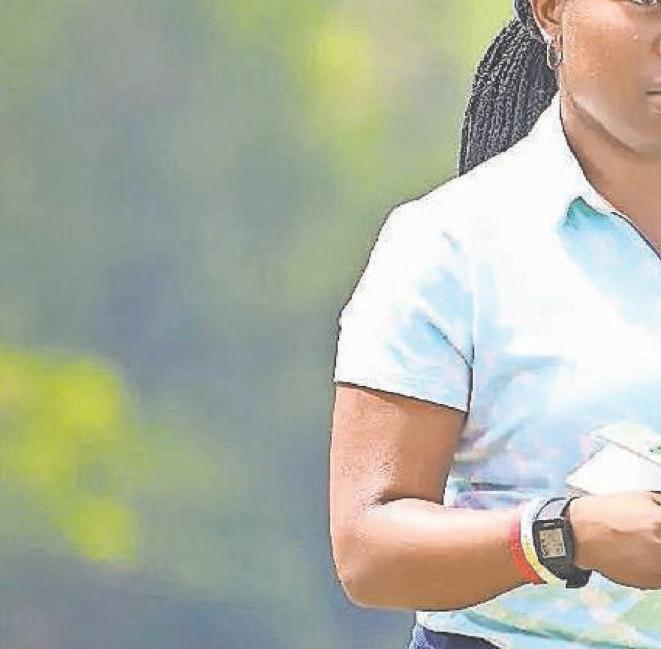

By Terrance Harris

Not unlike most kids growing up watching NBA basketball, Kendall Jackson loved watching Golden State Warriors star Stephen Curry and wishing she could emulate the shooting aspect of his game.
The thing is basketball really wasn’t Kendall’s thing. Golf was her sport.
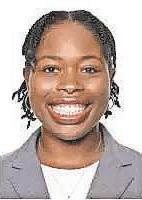
But in a surprising twist, Kendall and her parents found out in 2019 that Howard University was launching a Division I men’s and women’s golf programs, and none other than Curry had made a six-year financial commitment to support both Bison teams. The programs officially launched in 2021, which coincided with Kendall’s freshman year in college.
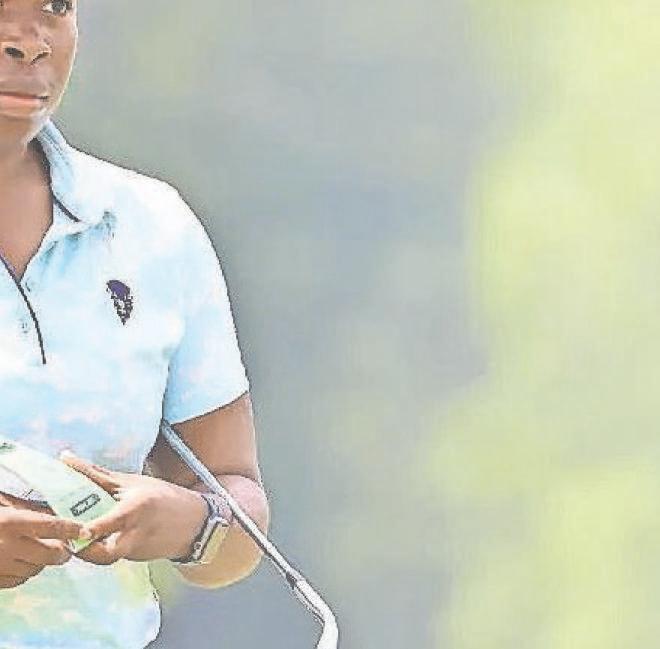
Being the first person to qualify for state definitely showed me the potential I have to not only play at an elite level in high school but to potentially play in college.”
KENDALL JACKSON


It was enough to convince the Pearland High School product, who really isn’t a fan of cold weather, to pack up and move more than 1,200 miles from home and her parents, Maurice and Nene Jackson.
“The opportunity to meet Steph, it was an opportunity I could not pass up,” she said. “Then being an only child, I pretty much depended on my parents for everything. So, I wanted to prove to myself that going to college, especially out of state, that I could do it and really take that next step to adulthood.”
Nearly four years later, Kendall has not just taken steps but has leaped into adulthood and the type of golf stardom that has made moving onto professional golf a realistic thing. Kendall is wrapping up her senior year at Howard where she has won six tournament championships and been a part of several fantastic finishes.
Howard golf coach Sam Puryear is beyond proud of Kendall’s growth since she arrived on campus. Kendall was one of four freshmen to initiate the new program in 2021.
“She exemplifies everything that you want in a student-athlete No.1,” Puryear said. “No. 2, she is an incredible representation of the university.
“She is always on time, which means she is early. She is always present. She works incredibly hard, she encourages the other girls, she’s a leader. As far as I’m concerned, if you have a team full of Kendalls, you have a team full of championships.”
She has come a long way since her father decided to introduce her to golf at the age of 6 through Greater Houston’s First Tee program. Maurice, a former football player at Texas Southern University, was already thinking of the personal and professional
benefits of his daughter learning the game of golf.
“I work in Corporate America, so I knew there are all kinds of deals being made on the golf course,” Mau rice said recently while watching Kendall play during the Women In Golf Foundation Inc’s National Women’s Golf Championship near Houston at the Golf Club at Katy Ranch.
“There are a lot of advantages to learning how to play golf. And for a young African Ameri can female, I wanted to make sure she knew the corporate side, and not only the corporate side but to play golf and how you can network and how you can advance your career.”


Not long after introducing Kendall to golf, it became clear that she had a lot of ability, but even more importantly, that she loved playing golf. Kendall liked that she could hit the ball far and that she was outdriving the girls she competed against.

Then there are the perks of meeting important people like Curry.

“I feel like with a lot of sports you have to make it to the highest of levels to be around certain people versus golf where all it takes is playing one round of golf with someone you would never meet and suddenly you are lifelong friends,” Kendall said. “Just the amount of doors and connections that opened, I feel like there is no other sport like that.
“You can also play this sport literally until you are 100 years old. Versus football and basketball, you can play this sport forever and make so many connections.”




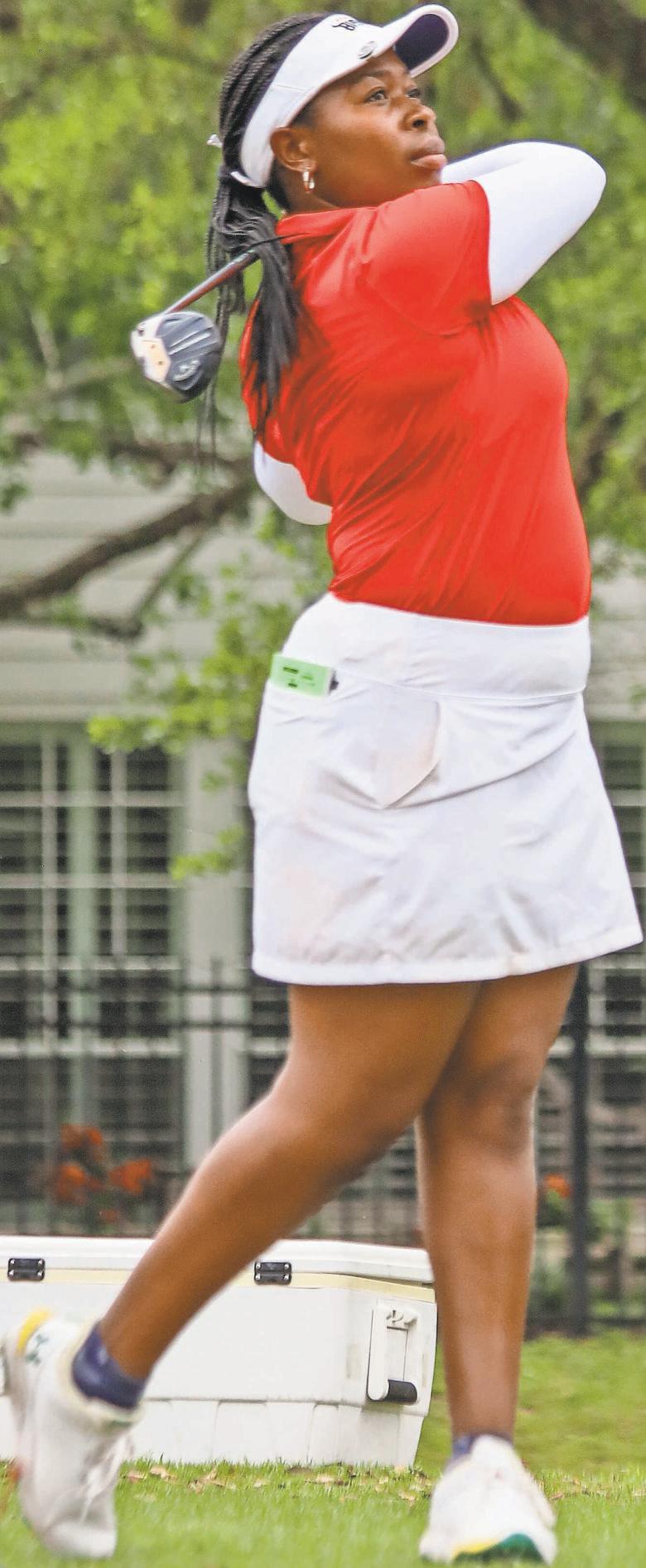
By Jimmie Aggison
Chemistry is something you can’t teach, but when you combine raw talent with perfect teamwork, something magical happens. That magic was on full display as Wheatley High School’s 4x100-meter boys relay team advanced to the Area round for the fifth consecutive year after running 42.88 at the HISD 4A District 20 track meet.
“Our 4x100-meter relay team is remarkable,” said head coach Lionel Kinsey III. “This team is incredibly talented and considered one of the best groups to ever attend Wheatley High School.”
This year’s relay team consists of four seniors: Jacorey Bonner, Joseph Andrews Jr., Nazier Elder and Arzjon Hawkins, showcasing a perfect blend of skill and chemistry that makes them hard to stop.
Last season’s team consisted of three juniors and senior Demetrius Evans, who ran the lead-off leg. However, with Evans graduating, Kinsey made a strategic shift by moving Bonner, the anchor leg for the past two years, to the first leg.
“Moving to the first leg was a bit of a transition,” said Bonner. “From running without blocks to coming out of blocks and from receiving the baton to giving it, it took some getting used to. I ran hurdles my junior year, so coming out of the blocks wasn’t new; I just had to adjust and focus on giving us a quick start.”
Relays come down to two things: speed and baton delivery, making Bonner’s role crucial in setting the tone for the team. Once he’s off and running, he passes the baton to Andrews Jr., who runs the second leg.
“Joseph is incredibly strong in the second leg, which is crucial because it’s the longest stretch without a curve,” said Kinsey. “I structure the team with the strongest runners between the second and third legs.”
Andrews has been running the second leg for the past two years, and his consistency is key to their success. He hands the baton off to Elder, the team’s smallest runner at 5-feet-9 and 151 pounds, but don’t let his size fool you.
“Being shorter, people tend to underestimate the power I bring,” said Elder, who excels
ABOUT JACOREY BONNER
Class: 2025
Twitter: @4llahcorey
Events: 4x1, 4x2, long jump
Height & weight: 6-feet2, 180 pounds
Favorite artist: Hunxho
Status: Uncommitted
Favorite subject: Culinary
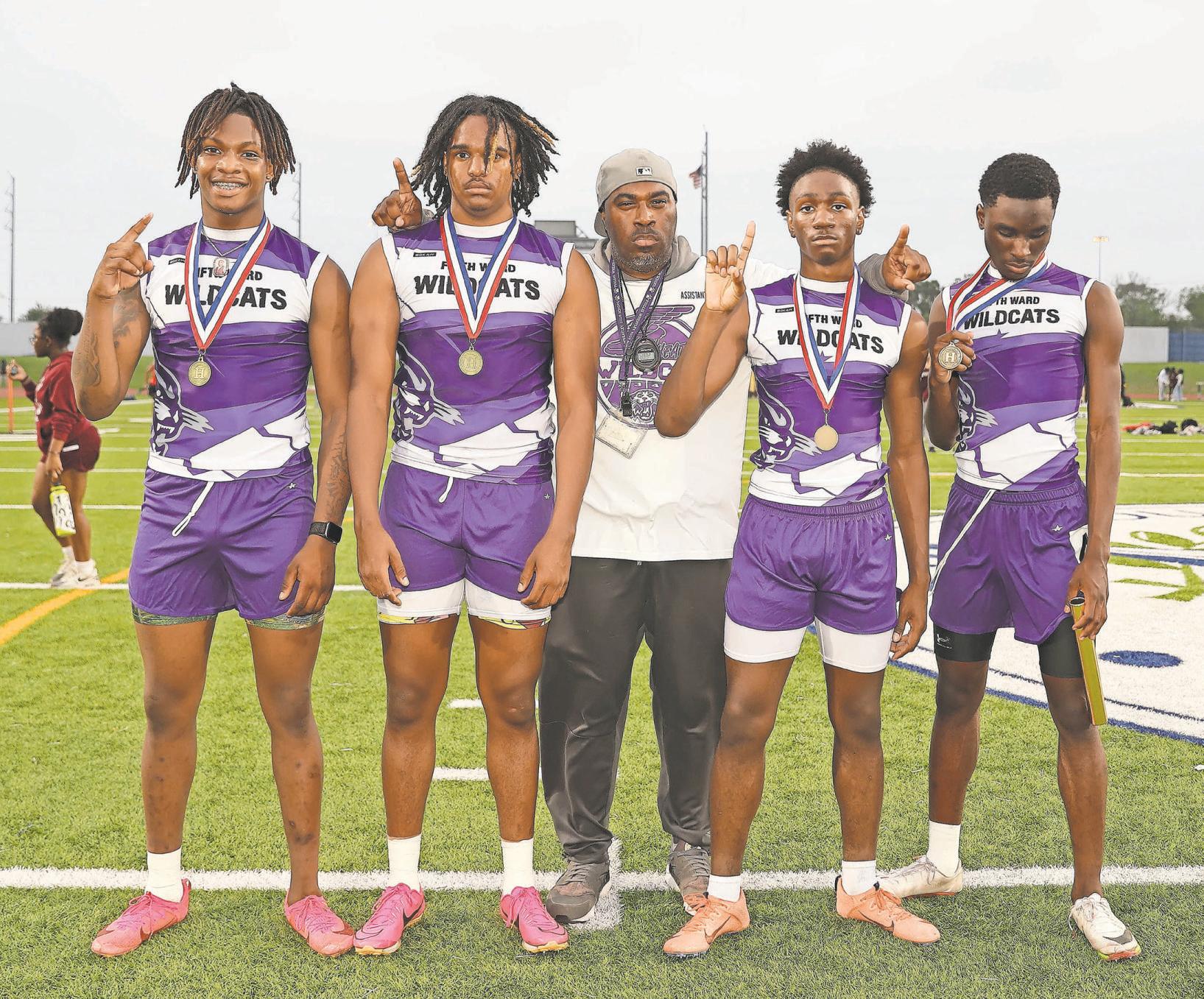
at running the curve, making him the perfect fit for the third leg. His smooth transition to Hawkins at the anchor is the final piece of the puzzle.
Hawkins, the newest member of the relay squad, brings a wealth of experience. After attending Wheatley as a freshman and sophomore, he transferred to Aldine McArthur for his junior year before returning to Wheatley for this season.
“I’ve only been running the anchor leg for
ABOUT JOSEPH ANDREWS JR.
Class: 2025
IG: @j.andrews12_
Twitter: @Joeshiesty12
Events: 4x1, 4x2, 100-meters
Height & weight: 6-feet2, 185 pounds
Favorite artist: Lil Baby
Status: Uncommitted
Favorite subject: Math
the last two meets, but when I get the baton from Elder, my only thought is to keep the lead and win,” Hawkins said. “I’m focused on finishing strong.”
With a perfect blend of speed, power, and endurance, Hawkins is the perfect anchor, embodying the traits of his teammates in one final explosive burst.
For Wheatley’s 4x100-meter relay team to continue advancing, they will need to continue dropping their time by getting to a fast
ABOUT NAZIER ELDER
Class: 2025
IG: @n5triim
Events: 4x1, 4x2, 100-meters
Height & weight: 5-feet9, 151 pounds
Favorite artist: NBA YoungBoy
Status: Uncommitted
Favorite subject: Math
start and having flawless handoffs to maintain their speed as they race around the track.
“The only difficulty we faced this season was finally putting the right chemistry together,” said Coach Kinsey. “With some runners coming in late due to other sports, it took a while to get everyone in place. But now that we have our relay team locked in, we’re a mainstay. We’re able to focus on the little things and sharpen them up. Our goal is to reach the state meet.”
ABOUT ARZJON HAWKINS
Class: 2025
IG: @znc.aj
Events: 200-meters, 4x1, 4x2
Height & weight: 5-feet11, 145 pounds
Status: Uncommitted
Favorite subject: English
By Laura Onyeneho
Art is a powerful form of freedom of expression, and Chandrika Metivier used it to communicate ideas, emotions and experiences without censorship or limitations.
For the non-binary multidisciplinary artist, it was a way to resist, be heard and ultimately reclaim her freedom.

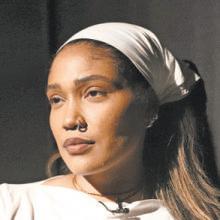
Metivier was arrested, faced criminal charges and huge fines for painting over Houston’s iconic ‘Be Someone’ bridge with messages of activism, calls for peace, voter engagement, and women’s rights. This was a legal battle that threatened to silence her voice.

Instead, art set her free. After a couple of years of fighting the legal battle, Metivier’s charges were dismissed. The experience that once punished her became the foundation for “Free Someone,” Project Row Houses (PRH)’ first-ever graffiti Round 58 art showcase from March 8 to June 1.
The event turns walls of resistance into canvases of liberation, honoring Houston’s street art legacy and the voices that refuse to be erased. In her legal case, this initiative required Metivier to participate in an anti-graffiti campaign.
However, when Metivier spoke with PRH Curator Cydney Pickens about her situation, they saw an opportunity to shift the narrative. Instead of a punitive campaign, PRH proposed honoring graffiti culture, recognizing the medium as a legitimate and vital form of artistic expression in Houston.
Her work in the showcase is titled “Censored,” an immersive portal that explores protest, art, censorship, activism, surveillance and graffiti. The viewer is confronted with these elements and views them through binoculars. The piece features clips of censored global histories, a poem, a video of the artist embodying censorship and examples of protest art for different movements.

“Since the city didn’t give me specific directions on how to fulfill this condition, Project Row Houses took this opportunity to create something meaningful,” Metivier said. “Cydney had already envisioned a project celebrating Houston’s graffiti artists, so we combined forces. That’s how ‘Free Someone’ was born.”
The title carries deep symbolism. It acknowledges how graffiti artists have used their craft to break free from societal constraints, pushing messages of resistance, identity and cultural pride into the public eye.
“She [Pickens] decided to name the Round Free ‘SOMEONE’, which I thought was so clever and brilliant because of the bridge I had been painting was given the name “Be Someone’”, Metivier said. “Because this case ended up getting dismissed through this round, it literally freed someone.”
PRH is a Houston institution that enriches communities through art and has long championed cultural identity and creative activism. This showcase features eight artists who have shaped Houston’s graffiti scene for decades. The Defender also spoke to Phillip “Article” Perez, Iris Karami and Craig “BBC” Long. Each brings unique perspectives on the evolution of street art in the city.

proves that art is a necessity and that no matter what your circumstances are, you have a need to see beauty and create beauty.”
I think art is often seen as a luxury, but when you think of graffiti, it’s not so luxurious.”
“I think art is often seen as a luxury, but when you think of graffiti, it’s not so luxurious. People think of big paintings that cost a lot of money and are enjoyed by a small group of people. Graffiti can be enjoyed by everyone,” Pickens said. “And the fact that the artists not only don’t get paid, they get arrested, they get shot at, they get beaten. It
PRH has seven art houses where artists showcase their work under one common theme. The artists had two weeks to install their artwork. These themed showcases are hosted twice a year. As a curator, Pickens says the selection process for artists varies from online applications to referrals, to physically attending 30-50 community events.
“A lot of the artists featured in this installation, haven’t gotten the opportunity to do artwork that wasn’t commissioned. So they were able to be free and show something that wasn’t necessarily an advertisement, but something that they really wanted to create in a different space,” Pickens said. “Not necessarily outdoors, but also indoors. We have these historic homes. It functions as a public space, but also almost like a museum or gallery space.”
Learn about the stories of other featured artists in the showcase